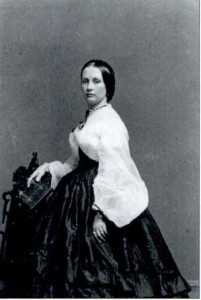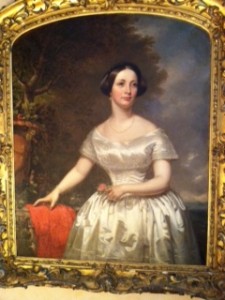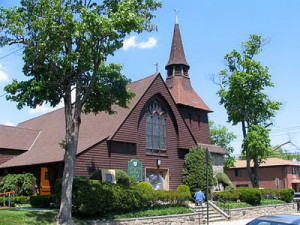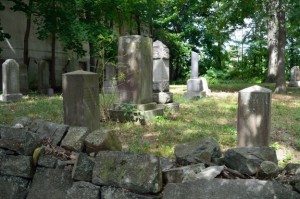Elizabeth Miller Boyce was my wife’s second great grandmother. Born on June 22, 1835 in Charleston, she was the daughter of Ker Boyce and his second wife Amanda Caroline Johnston (1806-1837).
Ante-bellum Charleston had extensive business connections with New York, which had been the center for building the ships that carried on the legal slave trade. Southerners claimed that New York City was “almost as dependent on Southern slavery as Charleston.” New York financed the cotton trade, including the purchase of slaves. Southerners were ubiquitous in New York; perhaps 100,000 Southerners visited the city each year.
It was presumably this connection that enabled Elizabeth to meet Frederick Newbold Lawrence (1834-1916). She married him on December 6, 1855 and moved to Bayside.
Marriage Portrait
The Lawrences had a Quaker heritage. They were not abolitionists, but many members of the family had been involved in manumission. Family legend has it that when Elizabeth moved to New York, she took her maid, a slave, with her. Elizabeth freed the slave, as required by the laws of New York State, and paid her wages.
When the maid died, it was discovered that she had saved all her wages and left them in her will to Elizabeth. She requested that she be buried at the feet of Elizabeth in the Lawrence cemetery.
A touching story and it may even be true.
Elizabeth’s husband Frederick became a Colonel in the state militia of Flushing’s Civil War; her brothers were in the Confederate Army.
In 1891 Elizabeth donated the land for All Saints Episcopal Church in Bayside.
She died June 26, 1894 and is buried in the Lawrence graveyard in Flushing.



